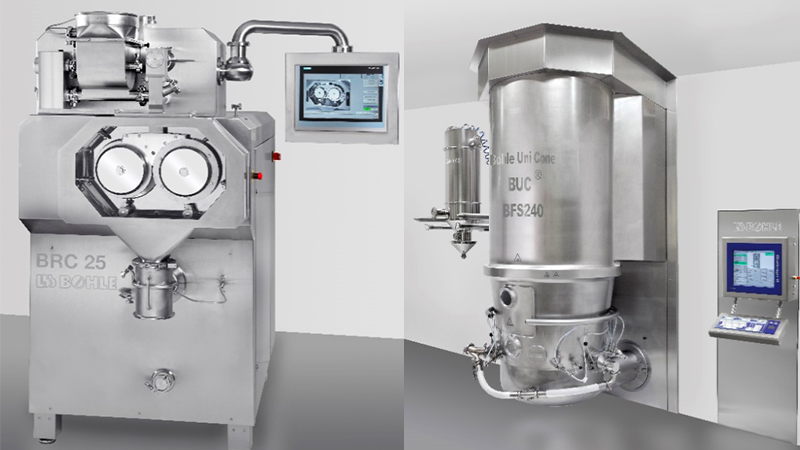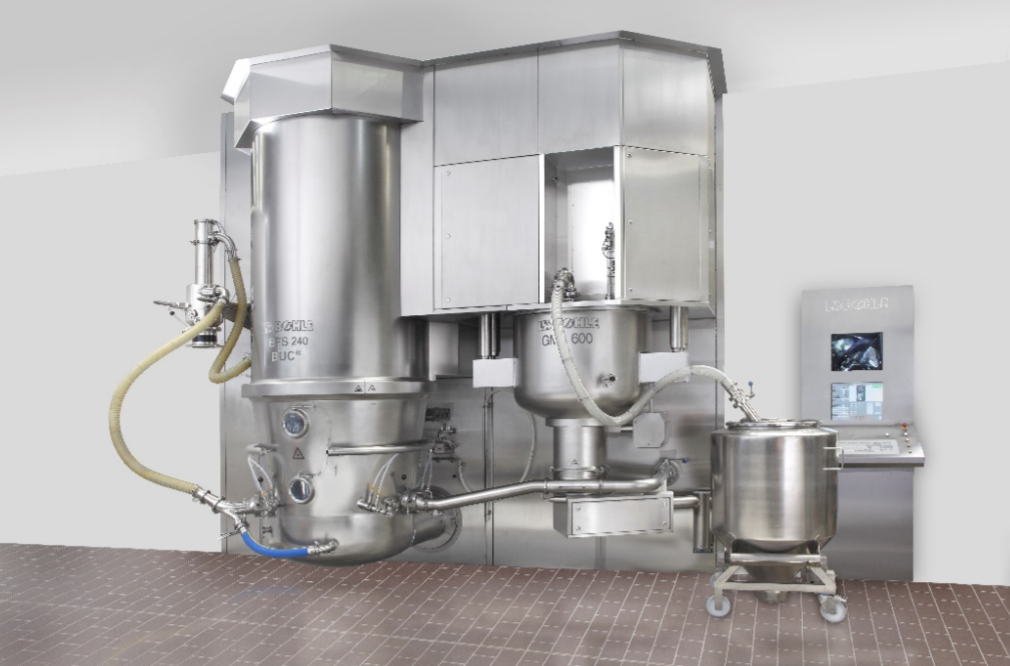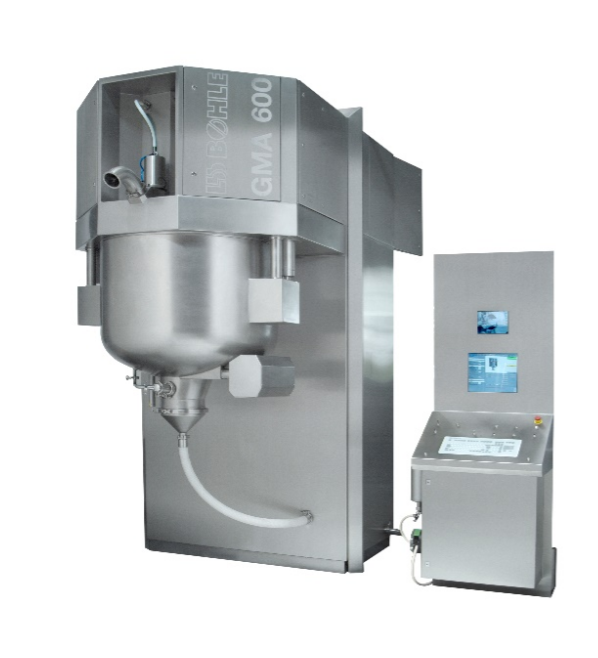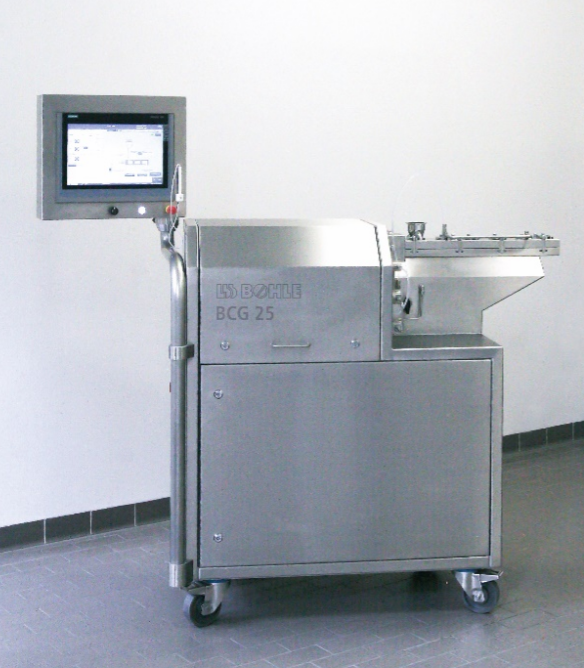Granulation continues to grow in importance in the pharmaceutical industry due to the increasing pressures related to cost in the production of solid dosage forms. Granulation aims to form coarser agglomerates from fine powder. Agglomerates may consist of fixed, dry grains, and each grain is an agglomeration of powder particles of sufficient strength. Granulates are used directly as pharmaceuticals or can serve as an intermediate in the production of tablets or capsules.
"With the largest range of different granulation processes on the market, we offer our customers the right system for every process," said Managing Director Technology Thorsten Wesselmann, focusing on the technical expertise.
Dry Granulation
Continuous dry granulation is an established process in the pharmaceutical industry and is used for more than just moisture or temperature-sensitive products. Compared with wet granulation, no energy-intensive drying processes are required. This reduces the need for large investments in equipment and production facilities and results in a lower cost per batch by reducing the energy costs. Because no drying is required, no solvents need to be stocked, extracted or disposed of.
Dry granulators ensure a compacting process with high material throughput. A single plant can produce different products and batch sizes.
"L.B. Bohle’s BRC series combines a high level of product capacity with minimum material loss. This system outclasses rival solutions by generating force through purely electromechanical means to ensure consistent ribbon properties,” said Wesselmann, highlighting Bohle’s advantages. The BRC controls the compacting force and ribbon thickness very innovatively. It produces the even compacting of material over a production range of <1 - 400 kg/h. The sophisticated system design facilitates the handling and shortens the assembly process.
The hygienic design and the integrated washer nozzles, fitted as standard, allow for an effective WIP process. Even at high material throughputs, the cone-shaped Bohle Turbo BTS sieve mill and sieve inserts gently crush the ribbons into granules with the desired particle size distribution. For Thorsten Wesselmann, it is also an advantage "that each BRC can be mounted with a different rotary sieve within minutes to adjust to new process and ribbon requirements.”
Thanks to its functional GMP-compliant design and PAT tool support, the compactor meets the requirements of the pharmaceutical “Quality by Design”.
Single-Pot Granulation
Single-pot granulation has been used in the pharmaceutical industry for many decades. With the VMA mixer granulator, the mixing, high shear wet granulation and drying (vacuum drying, carrier-gas drying, or drying by microwave heat) are all carried out in one container.
Single-pot granulators offer the following benefits:
- Secure production within a closed container in a vacuum
- High mixing and granulation efficiency (even for low doses of active agents at <1%)
- Drying at low temperatures
- Small product contact surface for fast, easy cleaning and fast product changeover
- Efficient solvent recovery through cooling water
- Compact footprint for low space requirements
The VMA product range includes classic Single-pot granulators with agitator and chopper units and a top-drive system. Two stirrers produce a shearing action and loosen the product. This helps to prevent clumping and ensures that the resulting granulate is of optimum quality. According to Wesselmann, the GMP-compliant process tank with double jacket is "the heart of the VMA." The main units are integrated in the granulation pot's lid (Top-Drive). The process tank is emptied through a cone-shaped sieve (BTS 200) via the floor outlet into a container (IBC). Formula-controlled cleaning is carried out automatically. The VMA produces batch sizes from 20 to 960 litres and can be installed in potentially explosive environments.

Left to right: Dry Granulator BRC and Fluid-bed granulator BRFS
Fluidized Bed Granulation / Fluid-bed Dryer
Fluidized bed systems have been used in the pharmaceutical industry for many decades. Adding an aqueous or alcoholic granulation medium compresses the mixture of dry powder particles. The fluid contains a volatile solvent which can be removed by drying. “For a long time, fluid bed solutions were dominated by top-spray systems. However, the benefits of systems with tangential spray nozzles are becoming more and more apparent and these systems are now tending to take over from top-spray granulators," said Wesselmann.
Since the fluidized particles or granules move tangentially at relatively low fluidization height, they do not require a high-volume expansion. This reduces the required installation height, saving costs and production space. Another advantage of the tangential design in plants from L.B. Bohle in Thorsten Wesselmann's opinion is "that granulation, coating and drying can be carried out in a single system without altering the equipment setup."
L.B. Bohle developed the BFS fluid bed system with tangentially mounted spray nozzles and the patented Bohle Uni Cone BUC, a specially slotted air distributor plate with a conical displacement cone for batches of 1 to 500 kg. Its pressure shock resistance of up to 12 bar makes the BFS the ideal choice for organic methods. Short product transfer times and efficient cleaning procedures offer additional potential savings in production time and cost. The geometrically similar structure simplifies scaling-up.
A newly developed, protected multi-purpose valve directly above the distributor plate facilitates the dust-free suction and draining of the product container. The result for Wesselmann is "clear benefits with regards to ergonomics and cleaning that make the BFS stand out significantly from other fluid bed systems on the market."
Compact module

Compact module
The Bohle compact plant integrates the individual components of the GMA high shear granulator, BTS wet sieve, BFS Bohle fluid bed system, Bohle Uni Con BUC, cyclone separator and BTS dry sieve perfectly into one unit. In doing so, the process, cleaning, control, explosion protection, zone concept and qualification are closely coordinated with each other.
The compact module allows for extremely space-saving installation due to the components being arranged right next to each other. In addition, direct product transfer is possible from the GMA's outlet valve to the BFS suction valve through a stainless-steel pipe. The tried and tested tangential sieve can also be integrated into this pipe. An additional drain valve is integrated in the BFS process tank so that the transfer and drain lines do not have to be modified during the process.
"In our opinion, the compact system is an effective solution when it comes to optimising classic wet granulation in an economical and ergonomic way. The compact system sets new industry standards due to its many technological advances and logical safety concept," explained Wesselmann.
- GMA and BFS are installed into the wall right next to each other
- Low space requirement and minimal installation height
- Multi-purpose use for a variety of processes
- One single control panel is used to control both machines
- WIP cleaning guarantees fast cleaning times
- Low space requirement, high quality
High shear granulation

Granulation with the High-shear Granulation GMA
With high shear granulation a binding fluid is added to the powdery particles in a closed tank that has an agitator blade and chopper. The agitator blade with its high shear and compaction guarantees effective granulation. Dense granulates are formed. The chopper prevents excessive granulate growth and distributes the granulation medium throughout the product.
The advantages at a glance:
- Low fluid consumption
- Easy unloading
- Closed system
- Granulation can be controlled according to the time, quantity or output
- Easy to clean and the water is drained completely
Twin screw granulation
Twin screw granulation (DSG) is an established method for continuous wet granulation and is seen as the starting point by companies when it comes to the continuous manufacturing of pharmaceuticals.

The twin-screw granualtor BCG can be used as a stand-alone system, or it can be fully integrated in Bohle´s continuous manufacturing unit QbCon
The powder to be granulated is fed onto two so-called screws, which rotate in the same direction in a cylinder, thereby transporting the material through the process zone and kneading and mixing it at the same time.
This DSG design results in several advantages:
- Short dwell times for the material in the process (< 1 minute – a few seconds)
- Fast and efficient reactions to process and quality deviations
- Reduction in the space for the required machines and associated GMP areas
- Mixing and granulation in one step and in the shortest time possible
- Introduction of instruments for 100% in-line quality control
- No more discarding of whole batches necessary as inferior quality products can be selectively ejected
- Implementation of experimental test plans in the shortest possible time
"Due to the flexibility and simple implementation of the process, the DSG is the perfect, versatile machine for continuous manufacturing processes in research and development and in production," said Wesselmann.





